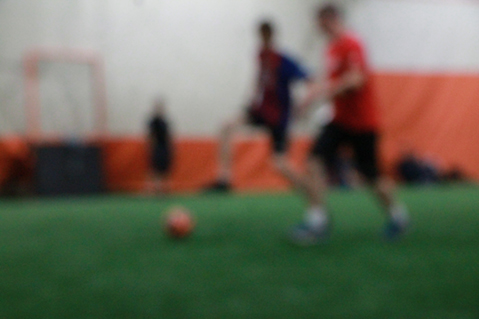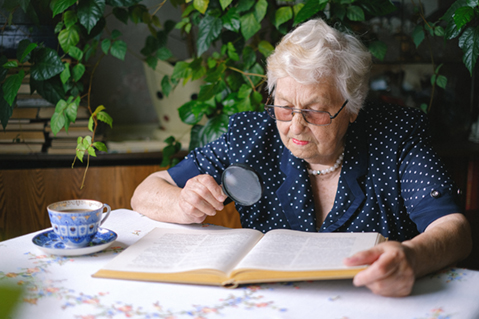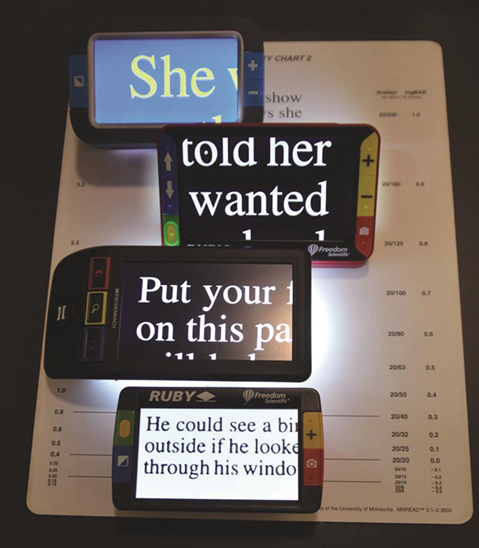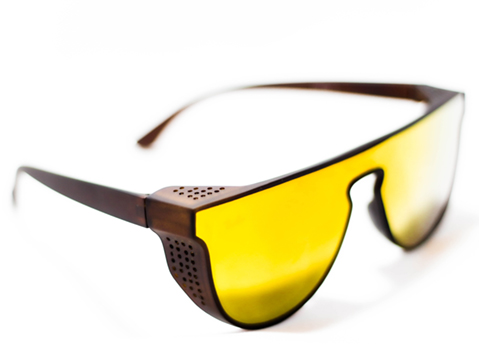
What is Low Vision?
Low vision is vision that cannot be corrected by conventional glasses, contacts, medical, or surgical treatment.1 While the severity may vary, a patient is considered to have low vision if they are unable to see well enough to do everyday activities including reading, driving, recognizing faces etc. Having low vision does not necessarily mean you are considered legally blind, only that you cannot perform activities that you would like to do.
Types of Low Vision:
Low vision can come from many common causes including congenital (present at birth) conditions, inherited diseases, or acquired pathology. These conditions can affect different parts of a patient’s vision, each presenting different challenges.
Central Vision: This is the fine detailed vision we use when looking at an object or reading text. This is commonly affected in conditions like macular degeneration or diabetic retinopathy.
Peripheral Vision: This is our side vision; it allows us to see objects that we are not looking at directly. This can be affected by diseases such as glaucoma and retinitis pigmentosa.
Blurry vision: Some conditions can affect the quality of vision, where everything appears blurry or hazy or certain portions of our vision appear distorted. Conditions including cataracts, epiretinal membrane or corneal dystrophies are common causes of blurred vision.
Decreased Contrast Sensitivity: The ability to distinguish an object from its background. Examples include looking at faded text on a newspaper or detecting an edge of a curb from a similarly colored street. Many of the previously mentioned ocular conditions can also affect contrast sensitivity.
How can we help?
With the assistance of your eye care provider there are many tools that can help you make the most your vision. During a low vision evaluation your provider will discuss your needs and what your vision goals may be. Some commonly prescribed devices include:
Hand Held/Stand Magnifiers: These are devices that can provide more magnification than is available in a regular pair of glasses. Depending on the chosen device they are great for quick spotting tasks such as reading labels on a package, an address on an envelope or to even more extending reading such as books or newspapers.

Electronic magnifiers: These devices provide the same benefits of hand held magnifiers with the increased benefit of being able to change the amount of magnification and adjust the brightness.

Filters: Different colored lens can be used to not only help protect the health of your eye but to also help increase comfort and provide improved contrast sensitivity. The filter choice depends on each person’s eye condition. Your eye care provider can determine which filter can provide the most benefit.

Having low vision does not mean you will have to give up the activities you love. Your eye care provider can help share guidance and provide resources to help you adapt to your vision loss.
Resources
1. Turbert, D., Gudgel, D. “What is low vision?.” American Academy of Ophthalmology, Septembe r 15, 2020. https://www.aao.org/eye-health/diseases/low-vision.
